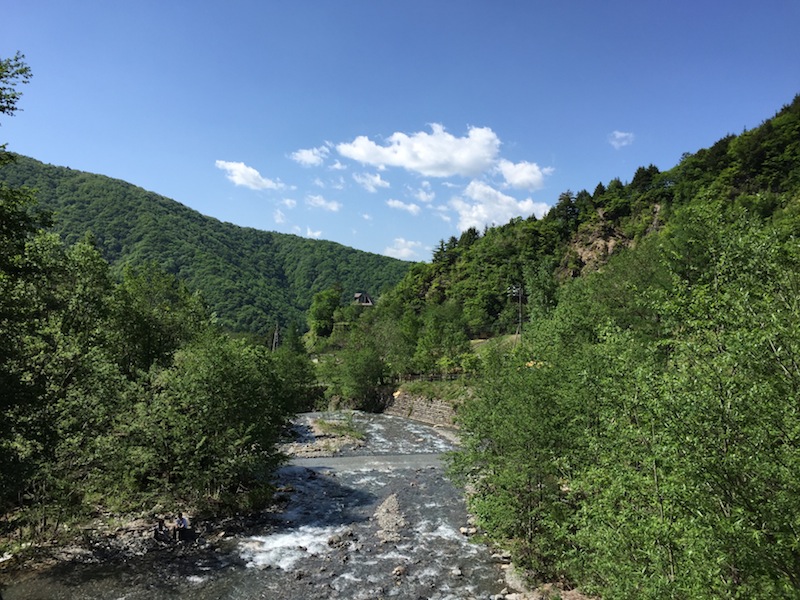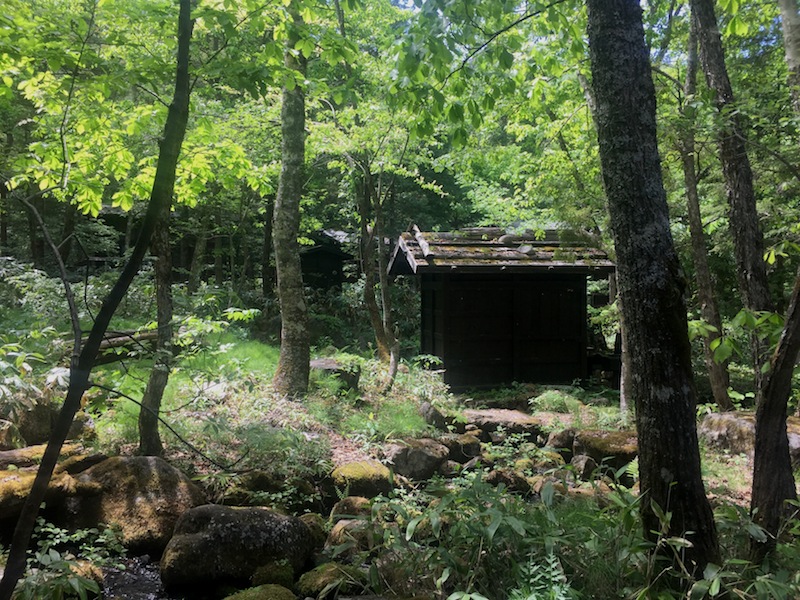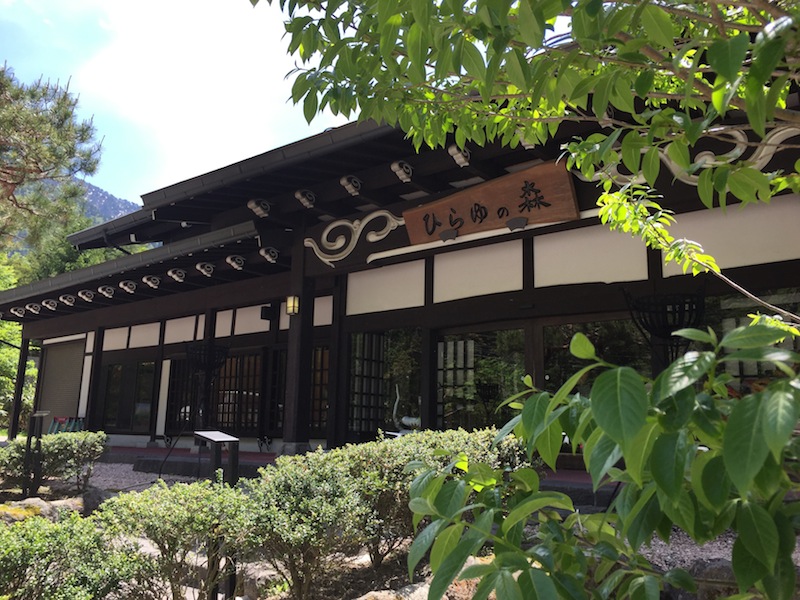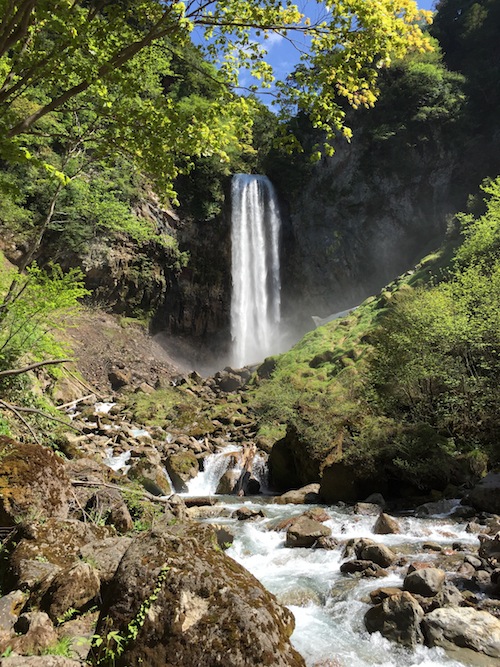Japan is a nation of contrasts, as a visit to one of the country’s traditional, steamy onsens illustrates.
These are the famous public baths fed by sulphurous hot springs where getting naked is mandatory, something the locals go for with the type of enthusiasm I’d normally associate with outgoing, uninhibited Scandinavians. It’s not the sort of behaviour one expects from a people with a reputation for being modest and shy.
We chose to visit an onsen that involved a day trip from our base in Takayama, one that lay amid the beautiful scenery of the Japanese Alps in the village of Hirayu. It turned out to be a day of communing with nature, which I felt I needed after days of city-based sightseeing and the generous consumption of beer in Takayama’s welcoming Red Hill Bar.
So we bought a bus ticket at Takayama station, climbed aboard our coach and watched the world go by as we drove through verdant valleys into the mountains. Beyond the towns and villages, paddy fields and ugly polytunnels peppered the landscape and vegetables flourished in the sunshine, some on tiny plots rescued from the narrowest of roadside verges. At times the views were glorious but armies of electricity pylons took the edge off many others.
The bus stopped at one or two rudimentary ski areas, now green in spring but which looked as if they’d offer some challenging runs in the depths of winter. The stops weren’t big enough to be called resorts in the European sense and their hotels and shops had all the charm of a run-down British motorway service station, making the contrast with the landscapes all the greater.
An hour out of Takayama and we arrived at the handsome Hirayuno-mori on the edge of the village of Hirayu, next to the dinky bus station. A traditional, wooden building with baby-soft tatami mats and modest staff, it sprawled into the woods beyond and doubled as a ryokan. Not planning a night stop, we purchased our day pass, smiled and bowed a lot to the receptionists and made a note of the bureaucratically extensive and therefore debilitating rules that come with bathing at a Japanese spa.
Top of the list of regulations is that you have to go naked. And you must scrub down and be thoroughly clean before you even get in the water, because a public bath is not a bath in the sense that we would understand it in the west. Instead, an onsen is a place to relax and contemplate once you’re sure there’s not a micron of filth on your person. You don’t put anything other than your body into the water, especially towels or soap, and Graham had to cover up his mini tattoo with a plaster because people with even the smallest bits of ink can be banned, such is the association of tattoos with the Japanese mafia.
Brits are not so used to public nudity and often view it as shameful, embarrassing or just a touch perverted. But we’ve been to our fair share of Finnish saunas and nude beaches and so getting our kit off and flashing our bits to the charming folk of Hirayu wasn’t something we thought twice about. We washed and scrubbed and rinsed while perched on little stools in the changing room, and just about coped with the smell of rotten eggs from the sulphurous springs that filled the air. Our onsen – one of thousands found across Japan – had indoor and outdoor baths but all of them were absolutely boiling, and I don’t mean bath-at-home hot either. The water was seriously, seriously scorching at Hirayuno-mori and I couldn’t sit in it for more than a minute or two at a time without suffering third-degree burns – unlike some of the locals who looked perfectly at ease with being boiled alive for alarmingly long stretches. Lacking asbestos for skin we did what we could, absorbed as many minerals as possible, relaxed in and out of the water and regretted the fact that talent was in seriously short supply.
Having said that, it was probably the first time on our holiday that we’d sat around doing nothing, and that was very nice indeed thank you. Afterwards we had lunch in the onsen’s restaurant, struggling to fry beef on our own cooker with just chopsticks for tools, but we managed to avoid flicking raw meat at our fellow diners and burning the establishment to the floor. Then we joined some other onsen visitors lying silently on tatami mats, chilling out while our dinners went down.
Outdoors it was hot and sunny and the mountains and their green, forested slopes and snow-covered peaks looked spectacular. We walked up past the local ski slope to the heavily engineered, concrete-bound river and then traced it uphill until we found the Hirayu waterfall. It was a sweaty climb up paths infested with Japanese knotweed but worth all the effort. The waterfall is a gem and tumbles 60 metres or so over the rocks, a marvel of nature that held us in its spell. The spray blew towards us in the breeze, a refreshing bonus in the heat of the day. Most of the time we were the only people there, hypnotised by the flow.
We walked back to the bus stop and travelled back to Takayama, with skin feeling wonderfully smooth and refreshed by the mineral-rich waters. In the evening we ate at Kotaro, a small, basic restaurant near our hotel that served the most amazing katsu. The couple who ran it were friendly, elderly and bustling, the deep-fried pork absolutely delicious and a testament to the years and years of effort the chef had put in to perfecting his dishes. His aged wife smiled and served and made us feel so welcome.
We ended up back at the Red Hill bar, our Takayama favourite. It was quieter but we continued to surprise ourselves by actually talking to people – something we’ve always been lousy at on holiday. We met Matthew (a New Zealander) and Paula, a couple who live in New York City. And then we chatted to a guy from Hong Kong who was working in a local hostel, away from the insanity of the city in which he was born. There was clearly something about the friendliness of Japan and its people that was rubbing off on us.





